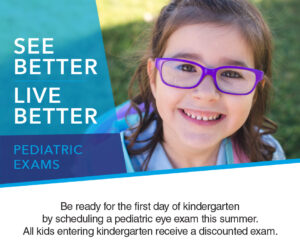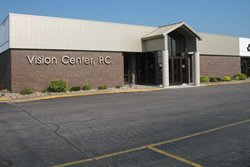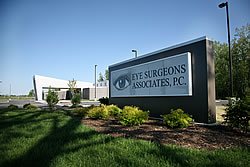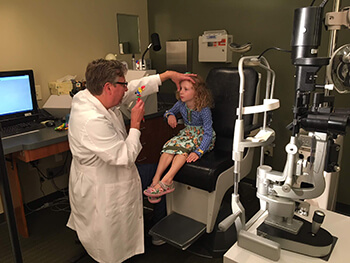 Babies are able to see as soon as they are born. For the visual system to continue to develop properly, children need clear input from both eyes to the brain. If there is some problem that interferes with vision in either eye or both, the connections from the eye to the brain can become weak or not develop properly. Crossed or turned eyes or imbalance in the way each eye focuses can interfere with this normal development of the visual system.
Babies are able to see as soon as they are born. For the visual system to continue to develop properly, children need clear input from both eyes to the brain. If there is some problem that interferes with vision in either eye or both, the connections from the eye to the brain can become weak or not develop properly. Crossed or turned eyes or imbalance in the way each eye focuses can interfere with this normal development of the visual system.
At Eye Surgeons Associates, your child receives care from a fellowship-trained pediatric ophthalmologist and orthoptists (therapists who are trained to assist the doctor with the evaluation of eye alignment disorders) in specially equipped exam rooms designed for children. Our caring staff possesses the skills and gentle disposition to treat even the youngest patients.
Our practice treats a wide variety of pediatric conditions including retinopathy of prematurity, blocked tear ducts, amblyopia (lazy eye), strabismus (misaligned eyes), hordeolum/chalazion (stye), allergic/vernal conjunctivitis, congenital ptosis (eyelid drooping), congenital cataracts, congenital glaucoma, dermoid cysts, and injuries.
At what age should you schedule an eye exam?
All children should have their vision checked by a pediatrician, family physician, or ophthalmologist by the age of three. Children with a family history of eye problems should be seen between six months and one year old. In Illinois, kindergarteners require an eye exam before starting school.
While only 4% of children have ocular problems that can diminish vision in one or both eyes, early detection is essential.
How do you examine a baby’s eyes?
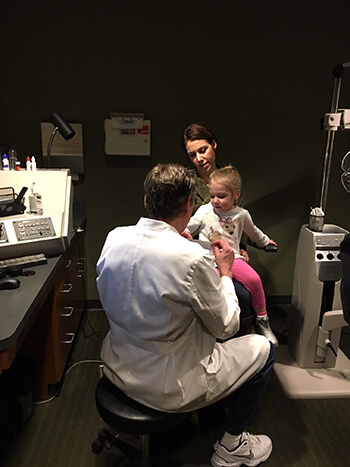 It is possible to do an eye exam even before a child can speak. The doctor uses lights to examine the pupils, eyelids and tear ducts. Reflections in the eye and movements of the eye indicate to the doctor if the eyes are working properly.
It is possible to do an eye exam even before a child can speak. The doctor uses lights to examine the pupils, eyelids and tear ducts. Reflections in the eye and movements of the eye indicate to the doctor if the eyes are working properly.
Small children who can’t read quite yet can point to pictures and shapes during an exam to test for vision problems.
In some special situations, measurements may be taken based on brain wave measurements while the child looks at stripes on flashcards.
Call to schedule an appointment today.

